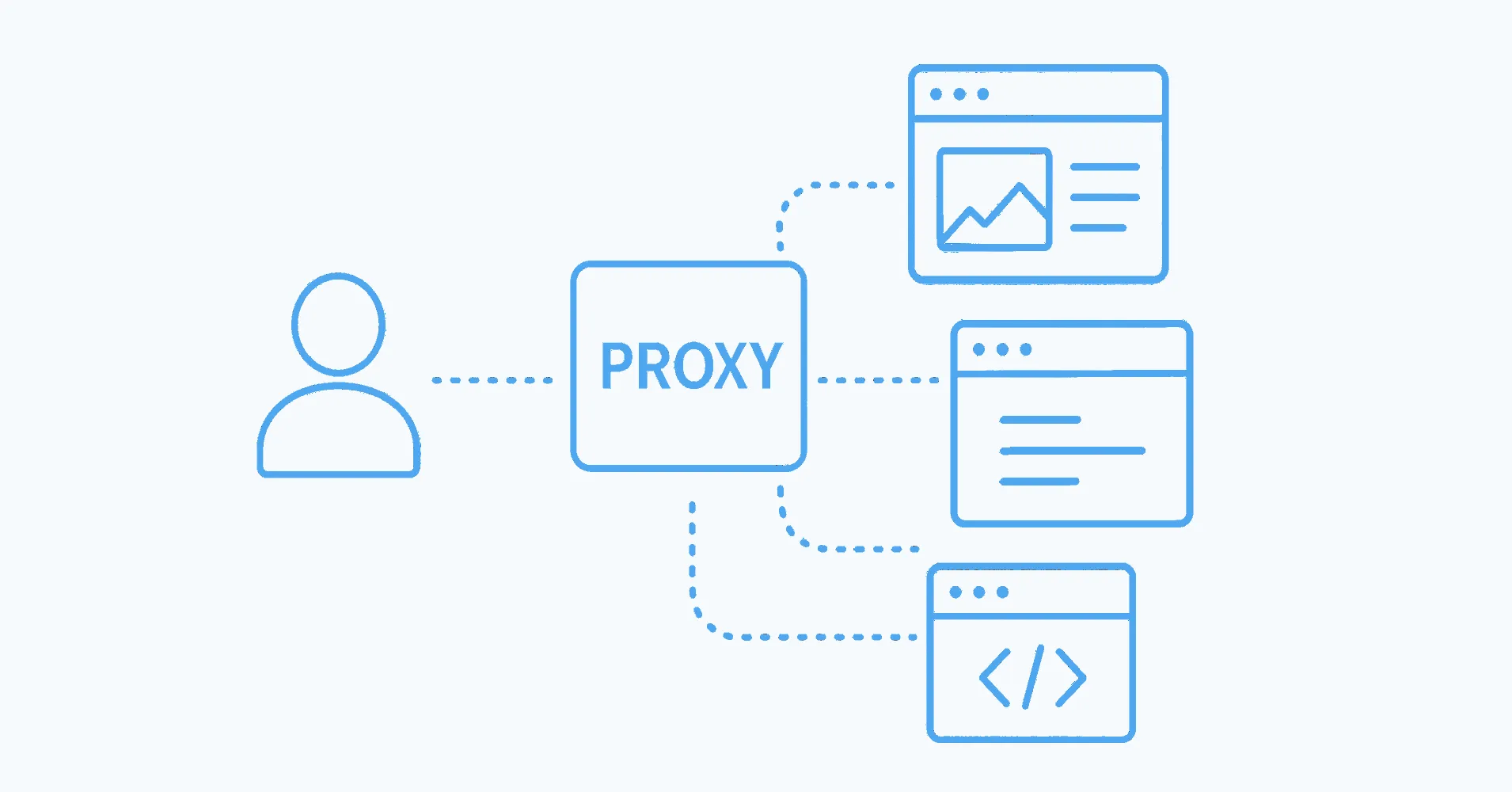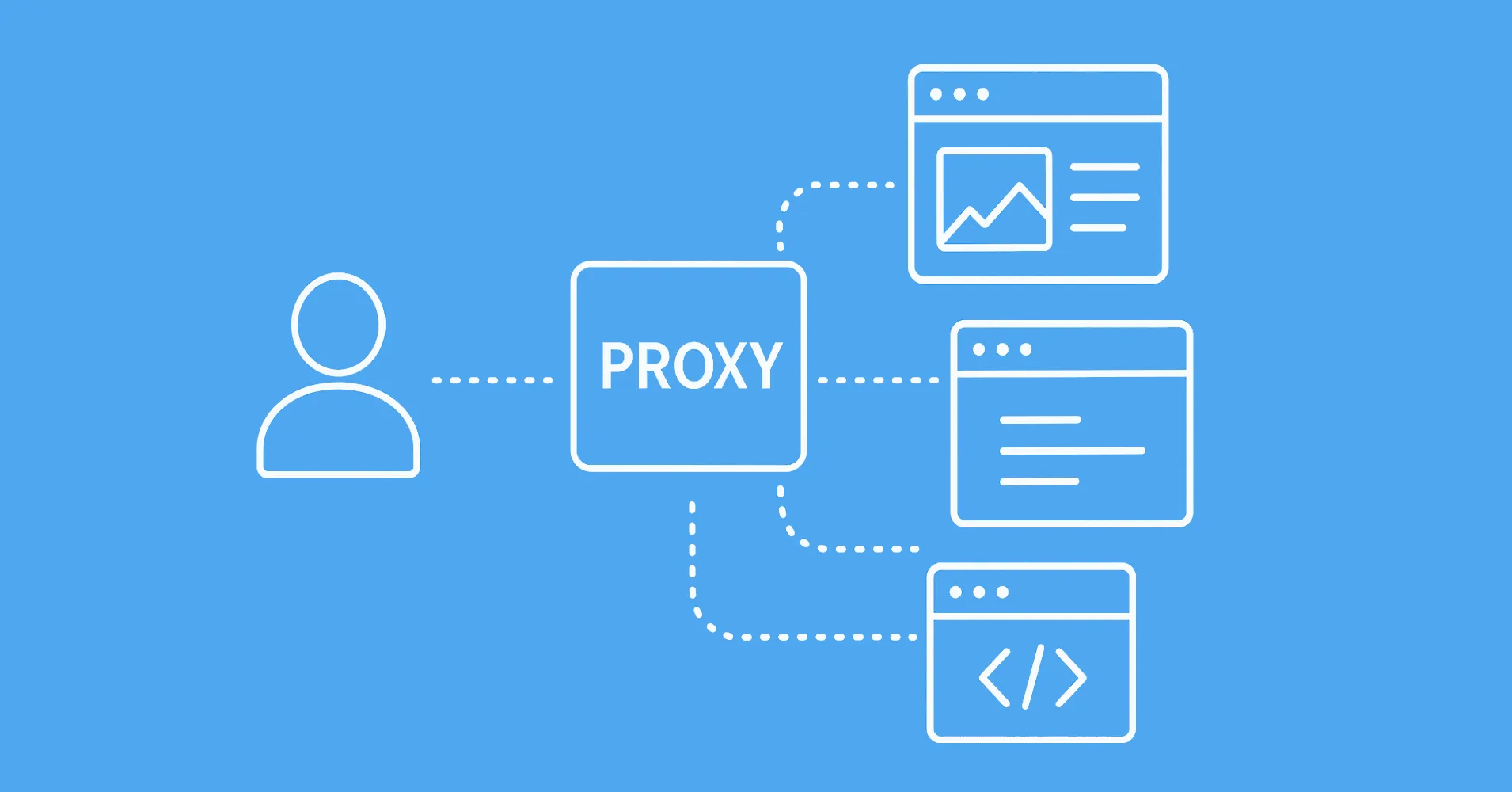
Whether you're scraping websites, managing multiple accounts, or protecting your privacy, using proxies efficiently can be the difference between success and constant frustration. Knowing how to optimize proxies isn't just a technical necessity it's a strategic advantage for developers.
In this article, we'll explore the key techniques to optimize proxy use, compare proxies with VPNs for clarity, and show you how tools like Scrapfly Proxy Saver can save you time and resources.
Key Takeaways
Optimize proxy performance by choosing the right proxy type, implementing connection pooling, monitoring bandwidth usage, and using smart caching strategies to reduce costs and improve web scraping efficiency.
- Choose the right proxy type for your needs - datacenter proxies for speed/cost, residential for stealth, mobile for highest anonymity
- Technical optimization is crucial - minimize latency, use connection pooling, implement proper error handling and retry logic
- Cost optimization matters - monitor bandwidth usage, implement smart caching, and use tools like Scrapfly Proxy Saver to reduce consumption
- Proxies vs VPNs serve different purposes - proxies for web scraping/automation, VPNs for general privacy and security
- Session management is key - maintain consistent sessions for authenticated requests, rotate IPs strategically
- Performance monitoring helps - track response times, success rates, and bandwidth usage to identify optimization opportunities
- Security considerations apply - use HTTPS, avoid logging sensitive data, and implement proper authentication
What Does It Mean to Optimize Proxies?
Optimizing proxies means configuring and using them in a way that maximizes speed, maintains anonymity, and reduces costs. This involves selecting the right proxy types, managing sessions properly, and understanding your use case.
Choosing the Right Type of Proxy
There are different types of proxies, each with specific advantages:
- Datacenter Proxies: Fast and affordable but easier to detect.
- Residential Proxies: Harder to block and better for anonymity but more expensive.
- Mobile Proxies: Offer the highest anonymity but often come with limitations in speed and availability.
Selecting the right proxy depends on your specific needs whether it's speed, cost-efficiency, or stealth.
Technical Setup for Maximum Speed
Speed optimization starts with minimizing latency and ensuring stability. Here's a sample setup using a proxy in Python:
import requests
proxies = {
'http': 'http://user:pass@proxyserver:port',
'https': 'http://user:pass@proxyserver:port'
}
response = requests.get('https://httpbin.dev/ip', proxies=proxies)
print(response.json())
In the above code, we configure HTTP and HTTPS requests to route through a proxy. This method allows us to distribute requests and avoid rate limiting.
Maintaining Anonymity
To maintain anonymity while using proxies:
- Rotate proxies frequently.
- Use user-agent strings that mimic real browsers.
- Avoid predictable patterns in request behavior.
These practices help prevent detection and blocking by websites.
Keeping Costs Under Control
Bandwidth costs and proxy rates can add up quickly. To reduce expenses:
- Use datacenter proxies for high-volume, low-risk scraping.
- Reserve residential proxies for complex or sensitive targets.
- Implement intelligent request throttling to reduce unnecessary usage.
Proxy vs. VPN: A Quick Comparison
| Feature | Proxy | VPN |
|---|---|---|
| Speed | Faster | Slightly slower due to encryption |
| Anonymity | Depends on proxy type | High, but centralized |
| Use Case | Scraping, automation, SEO tools | General browsing, streaming |
| Cost | Variable (can be low) | Often subscription-based |
For more detail, check out our article:
Proxy vs VPN: In-Depth Comparison
Explore the proxy vs vpn debate with insights on key differences, benefits, limitations and alternatives. Discover when to choose a proxy or VPN.

Proxy in Web Scraping
Proxies play a pivotal role in web scraping, acting as intermediaries that mask your IP address, rotate identities, and help access region-restricted or rate-limited data sources. Whether you're working on small scripts or enterprise-scale data pipelines, proxies ensure that your scraping operations remain anonymous and uninterrupted.
Why Proxies Matter in Web Scraping
Using a proxy allows you to:
Avoid IP bans by rotating through multiple addresses.
Access geo-specific content by routing requests through different countries.
Stay under the radar with residential or mobile IPs that mimic real user behavior.
Integrating proxies effectively helps ensure scalability, reliability, and compliance in web scraping tasks.
Now let’s look at how to improve proxy usage by reducing resource load.
Blocking Resource Loading in Web Scraping Tools
Blocking unnecessary resources like images and media files can significantly speed up your web scraping process and save proxy bandwidth. Here's how you can do it in different libraries:
Selenium
First, install Selenium:
pip install selenium
Use Chrome options to disable images or combine Selenium with mitmproxy for advanced filtering:
from selenium import webdriver
from selenium.webdriver.chrome.options import Options
options = Options()
options.headless = True
chrome_options = webdriver.ChromeOptions()
chrome_options.add_argument('--blink-settings=imagesEnabled=false')
chrome_options.add_experimental_option(
"prefs", {"profile.managed_default_content_settings.images": 2}
)
driver = webdriver.Chrome(options=options, chrome_options=chrome_options)
driver.get("https://www.example.com")
driver.quit()
Or block specific resource types using mitmproxy:
First, install mitmproxy:
pip install mitmproxy
# Save as block.py and run with mitmproxy -s block.py
from mitmproxy import http
BLOCK_RESOURCE_EXTENSIONS = ['.gif', '.jpg', '.jpeg', '.png', '.webp']
def request(flow: http.HTTPFlow) -> None:
if any(flow.request.pretty_url.endswith(ext) for ext in BLOCK_RESOURCE_EXTENSIONS):
flow.response = http.Response.make(404, b"Blocked", {"Content-Type": "text/html"})
For more, read the full guide:
Web Scraping with Selenium and Python
Introduction to web scraping dynamic javascript powered websites and web apps using Selenium browser automation library and Python.

Playwright
First, install Playwright:
pip install playwright
playwright install
Intercept requests and block unwanted resources by type or keyword:
from playwright.sync_api import sync_playwright
def intercept_route(route):
if route.request.resource_type in ['image', 'media']:
return route.abort()
return route.continue_()
with sync_playwright() as pw:
browser = pw.chromium.launch(headless=True)
page = browser.new_page()
page.route("**/*", intercept_route)
page.goto("https://www.example.com")
browser.close()
For more, read the full guide:
Web Scraping with Playwright and Python
Playwright is the new, big browser automation toolkit - can it be used for web scraping? In this introduction article, we'll take a look how can we use Playwright and Python to scrape dynamic websites.

Puppeteer
First, install Puppeteer:
npm install puppeteer
Puppeteer enables blocking based on resource type or matching URLs:
const puppeteer = require('puppeteer');
(async () => {
const browser = await puppeteer.launch();
const page = await browser.newPage();
await page.setRequestInterception(true);
page.on('request', request => {
if (['image', 'media'].includes(request.resourceType())) {
request.abort();
} else {
request.continue();
}
});
await page.goto('https://www.example.com');
await browser.close();
})();
For more, read the full guide:
Web Scraping with Playwright and Python
Playwright is the new, big browser automation toolkit - can it be used for web scraping? In this introduction article, we'll take a look how can we use Playwright and Python to scrape dynamic websites.

Scrapfly Proxy Saver
Scrapfly Proxy Saver is a middleware solution designed to enhance your existing proxy setup by optimizing bandwidth usage, improving stability, and providing advanced fingerprinting capabilities. It acts as a man-in-the-middle (MITM) service, offering a suite of features tailored for developers and data professionals.
Key Benefits
- Bandwidth Optimization: By stubbing unnecessary resources like images and CSS, Proxy Saver can reduce bandwidth consumption by up to 30%.
- Automatic Caching: Leverage Scrapfly's CDN to automatically cache results, redirects, and CORS, enhancing response times and reducing redundant requests.
- Fingerprint Impersonation: Choose from a pool of real web browser profiles to mimic genuine user behavior, aiding in bypassing proxy detection mechanisms.
- Enhanced Stability: Proxy Saver improves connection stability by automatically retrying failed requests and resolving common proxy issues.
- Seamless Integration: Supports integration with platforms like Python and TypeScript, ensuring flexibility across different development environments.
Use Cases
Proxy Saver is versatile and caters to various industries:
- AI Training: Reduce bandwidth usage and increase response times when working with data-intensive websites.
- Compliance: Efficiently proxy to compliance sources, ensuring data integrity and reduced overhead.
- eCommerce: Enhance stability when accessing e-commerce platforms, ensuring consistent data retrieval.
- Financial Services: Optimize bandwidth and response times when interfacing with financial data sources.
- Fraud Detection: Improve response times and reduce bandwidth usage in fraud detection systems.
Getting Started
To utilize Proxy Saver:
- Create a Proxy Saver Instance: Access the Scrapfly dashboard and set up a new Proxy Saver instance.
- Configure Your Proxy: Attach your existing proxy connection to the Proxy Saver instance.
- Authentication: Use the standard
username:passwordscheme, where the username isproxyId-XXX(your proxy ID) and the password is your API key. - Advanced Configuration: Utilize parameters like
Timeout-10to set timeouts orFpImpersonate-chrome_win_130to impersonate specific browser fingerprints.
Pricing
Proxy Saver operates on a pay-as-you-go model:
- Base Rate: $0.2 per GB of bandwidth used.
- Additional Features: Fingerprint impersonation incurs an extra $0.1 per GB.
Monitor your usage and billing details directly from the Proxy Saver dashboard.
Caching Proxy Strategies
Caching is a powerful technique to boost the efficiency of proxy usage. By avoiding redundant data requests, developers can significantly reduce costs and improve speed, especially in large-scale scraping projects.
Why Use Caching with Proxies?
Caching in proxy workflows ensures that data retrieval is not only faster but also more economical. By storing commonly accessed responses, you can greatly minimize redundant traffic and API load.
- Reduce Bandwidth Costs: Avoid fetching the same data multiple times, which is especially useful with paid proxies.
- Improve Speed: Cached data loads faster, reducing wait times.
- Enhance Stability: Reduces the volume of live requests sent through proxies, minimizing potential failures.
How to Implement Caching
There are multiple layers at which caching can be implemented, each offering unique advantages. Whether you're working locally or integrating with a proxy service, there are effective solutions to fit your needs.
- Local Caching: Use tools like
requests-cachein Python. - Proxy-Level Caching: Leverage built-in features in services like Scrapfly Proxy Saver that offer CDN caching.
- Custom Strategies: Develop logic that checks for cached responses before querying external sites.
import requests
import requests_cache
requests_cache.install_cache('demo_cache', backend='sqlite', expire_after=180)
response = requests.get('https://example.com/data')
print(response.from_cache) # Indicates if response was cached
Now that you understand how caching can boost proxy efficiency, let’s move on to common questions developers have.
FAQs
Can proxies handle JavaScript-heavy sites?
Yes, proxies can be used with JavaScript-heavy websites, but you'll need to use headless browsers or frameworks like Puppeteer and Playwright that support JavaScript rendering. Proxies ensure traffic routing while these tools manage dynamic content loading.
Are there free proxies worth using?
Free proxies exist and may work for basic or low-risk tasks, but they often suffer from issues like slow speeds, instability, or a high chance of being blocked. For reliable performance, it's recommended to use paid or vetted proxy services.
How do I test if a proxy is working?
You can test proxies by sending a request to a service like httpbin.dev/ip or using proxy checker tools. If the IP in the response matches your proxy and no errors occur, the proxy is functioning correctly.
Summary
To optimize proxies effectively, you need to select the appropriate proxy type, fine-tune your technical implementation for speed, and practice cost-efficient usage. By understanding the differences between proxies and VPNs, and using tools like Scrapfly Proxy Saver, developers can significantly improve their workflow and performance.






